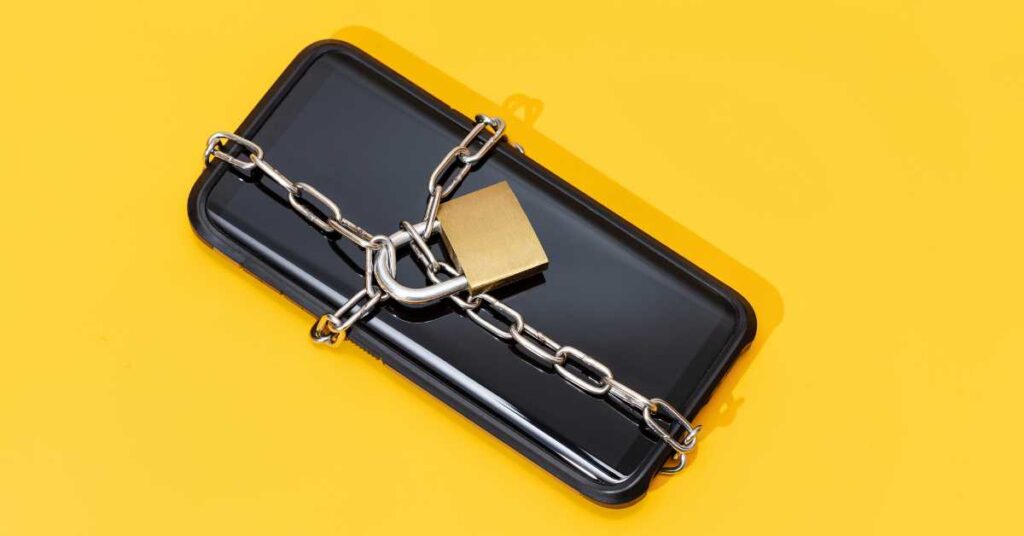In today’s digital age, our smartphones and tablets have become an integral part of our lives. We use them for communication, browsing the internet, online shopping, banking, and so much more. However, with the convenience and connectivity they provide, comes the risk of online threats.
From malware attacks to data breaches, our personal information and privacy are constantly at risk. In this article, we will explore effective strategies and best practices to safeguard your smartphone and tablet from online threats. So, let’s dive in and ensure the security of your valuable devices!
Understanding the Online Threat Landscape
Cybercriminals are constantly evolving their tactics to exploit vulnerabilities in mobile devices. It’s crucial to stay informed about the various types of online threats, such as phishing attacks, malicious apps, ransomware, and social engineering. By understanding these risks, you can better protect your smartphone and tablet.
Keep Your Operating System and Apps Up to Date
Regularly updating your device’s operating system and applications is essential for maintaining security. These updates often include security patches that address known vulnerabilities. Enable automatic updates on your device to ensure you’re always running the latest, most secure versions.
Install a Reliable Mobile Security App
Investing in a reputable mobile security app is a proactive step towards safeguarding your smartphone and tablet. These apps provide real-time scanning for malware, secure browsing features, anti-theft functionality, and remote data wiping in case of device loss or theft. Research and choose a reliable security app from a trusted provider.
Be Wary of Suspicious Links and Attachments
Phishing attacks are prevalent in the digital landscape, and they often target mobile users. Exercise caution when clicking on links or downloading attachments from unfamiliar sources, emails, or text messages. Verify the sender’s credibility and double-check the URL before entering any sensitive information.
Use Strong, Unique Passwords
Protecting your device with a strong password is fundamental. Use a combination of upper and lowercase letters, numbers, and special characters. Avoid using easily guessable information like birthdates or names. Furthermore, refrain from reusing passwords across multiple accounts to prevent a domino effect if one account gets compromised.
Enable Two-Factor Authentication (2FA)
Two-Factor Authentication adds an extra layer of security to your accounts by requiring a second form of verification, such as a fingerprint scan or a unique code sent to your device. Enable 2FA whenever available, as it significantly reduces the risk of unauthorized access to your accounts.
Be Mindful of Public Wi-Fi Networks
Public Wi-Fi networks are notorious for their lack of security. Avoid conducting sensitive activities, such as online banking or accessing confidential information when connected to public Wi-Fi. If necessary, use a virtual private network (VPN) to encrypt your internet connection and protect your data from prying eyes.
Review App Permissions
When installing new applications, carefully review the permissions they request. Some apps may ask for unnecessary access to your contacts, camera, or location, potentially compromising your privacy. If an app’s permissions seem excessive or unnecessary for its functionality, consider finding an alternative or contacting the app developer for clarification.
Secure Your Device with Biometric Authentication
Most modern smartphones and tablets offer biometric authentication methods like fingerprint or facial recognition. Take advantage of these features to enhance the security of your device. Biometric authentication provides an added layer of protection, as your unique biological traits are difficult to replicate.
Regularly Backup Your Data
In the unfortunate event of a security breach or device loss, having recent backups of your data is a lifesaver. Regularly backup your smartphone and tablet using cloud services or physical storage devices. This way, even if your device is compromised, you can restore your data to a new device securely.
Educate Yourself and Stay Informed
The world of online threats is ever-changing, and staying up to date is crucial. Educate yourself about the latest security practices, emerging threats, and privacy concerns. Follow reputable technology blogs, subscribe to security newsletters, and be an informed user.
Be Cautious with Third-Party App Stores
While official app stores like Google Play Store or Apple App Store have security measures in place, third-party app stores are riskier. Avoid downloading apps from unverified sources, as they may contain malware or malicious code that can compromise your device’s security.
Practice Safe Browsing Habits
Exercise caution while browsing the internet on your smartphone or tablet. Stick to reputable websites, avoid clicking on suspicious ads, and refrain from downloading files from untrustworthy sources. A vigilant browsing approach significantly reduces the risk of encountering online threats.
Securely Dispose of Old Devices
When it’s time to upgrade your smartphone or tablet, ensure you dispose of your old device securely. Wipe all data from the device and perform a factory reset to remove any personal information. Consider recycling or donating your old device to reputable organizations that specialize in electronic waste management.
Stay Vigilant and Adapt
The online threat landscape is constantly evolving, and new risks emerge regularly. Stay vigilant, adapt to new security practices, and remain proactive in safeguarding your smartphone and tablet. By staying ahead of the curve, you can better protect your personal information and enjoy a secure digital experience.
Remember, protecting your smartphone and tablet from online threats requires a combination of knowledge, awareness, and consistent implementation of security measures. By following the strategies outlined in this article, you can significantly reduce the risk of falling victim to online attacks and keep your valuable devices and personal information safe.
Conclusion
In an increasingly connected world, securing our smartphones and tablets from online threats is of utmost importance. By understanding the threat landscape, staying updated, using security apps, practicing safe browsing habits, and following best practices like strong passwords and regular backups, we can mitigate risks and protect our devices and personal data. Remember, a proactive and informed approach is the key to a secure digital experience.
Frequently Asked Questions (FAQs)
Q1. Can I rely solely on the built-in security features of my smartphone or tablet?
A1. While built-in security features offer a basic level of protection, it is recommended to augment them with additional security measures like installing a reputable mobile security app and following best practices outlined in this article.
Q2. How often should I update my device’s operating system and apps?
A2. It’s best to enable automatic updates for your operating system and apps. This way, you’ll receive the latest security patches as soon as they become available. Regular updates are crucial for staying protected against emerging threats.
Q3. Are all third-party app stores unsafe?
A3. While not all third-party app stores are inherently unsafe, they pose a higher risk compared to official app stores. It’s recommended to download apps only from trusted sources to minimize the chances of downloading malicious software.
Q4. Should I be concerned about malware on iOS devices?
A4. While iOS devices are generally considered more secure due to Apple’s strict app review process, they are not completely immune to malware. It’s still important to practice safe browsing habits and exercise caution when downloading apps or clicking on links.
Q5. What should I do if my smartphone or tablet gets lost or stolen?
A5. If your device is lost or stolen, act quickly. Use a device-tracking service if available, remotely wipe your data if possible, and contact your service provider to report the incident. It’s also essential to change your passwords for any accounts associated with the device.
Remember, staying proactive and informed about online threats is key to protecting your smartphone and tablet. Implement the recommended strategies and stay vigilant to ensure a secure and worry-free digital experience.






